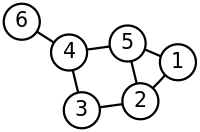Circuit rank

Okay, so imagine you have a big toy box with lots of toys inside. Now, some of the toys are special because they can connect with each other and make cool things happen, like a car that can light up or a robot that can move its arms.
Just like with those toys that connect, electronic circuits are made up of different parts that can connect and work together. These parts are called "gates," and they can do things like turn on or off, or change a signal from one thing to another.
Circuit rank is a way to measure how many of these gates are needed to make a circuit work in a certain way. It's kind of like counting how many toys you need to make a specific toy combination, like how many blocks you need to make a big tower.
So, the rank of a circuit tells us how complex it is and how many parts it needs to work properly. A higher-ranking circuit is more complex and needs more gates to work correctly.
So, just like counting how many toys you need to make a specific combination, circuit rank helps engineers understand how many gates they need to create a specific electronic circuit. It's a helpful tool for designing and building new technology!
Just like with those toys that connect, electronic circuits are made up of different parts that can connect and work together. These parts are called "gates," and they can do things like turn on or off, or change a signal from one thing to another.
Circuit rank is a way to measure how many of these gates are needed to make a circuit work in a certain way. It's kind of like counting how many toys you need to make a specific toy combination, like how many blocks you need to make a big tower.
So, the rank of a circuit tells us how complex it is and how many parts it needs to work properly. A higher-ranking circuit is more complex and needs more gates to work correctly.
So, just like counting how many toys you need to make a specific combination, circuit rank helps engineers understand how many gates they need to create a specific electronic circuit. It's a helpful tool for designing and building new technology!
